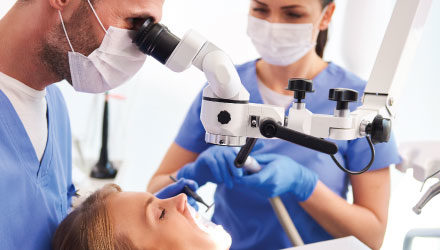By Julie Parker, Julie Parker Practice Success
Technology is a marvellous thing. Clinically it has transformed how dentistry is performed, and provides an amazing range of treatment options for patients. So too there have been great changes in how the tasks of reception are executed.
The introduction of computers and dental software has meant that practices now have the ability for detailed documenting and highly efficient processes for areas such as recalls and following up incomplete treatments.
When I had my practice between 2003 and 2013, I was also the receptionist-practice manager. With the amount of work I needed to complete on a daily basis, I was eager to utilise as many time-saving features of my Dental 4 Windows program that I could.
The software certainly saved time and improved efficiency in all areas that I applied it. However, I found that there were some tasks that were still best managed manually in order to achieve the desired outcome. These tasks centred on patient communication.
For example, consultation confirmations. Software supported confirmation via SMS, and completion of the task takes just seconds. But I always felt that more was achieved when I telephoned the confirmations. Often the call would extend to:
- clarification of time and length of consultation
- clarification of patient expectations of what was to occur at that days’ consultation
- reminder to patients to take antibiotic cover if needed
- reminder to patient to bring along OPG/grinding splint/other such items needed for treatment
- answer any queries that patient has.
Every conversation we have with a patient is another reason to strengthen the relationship with them. Stronger relationships mean deeper patient engagement. Engaged patients are more likely to keep consultation times, proceed with advised treatment and recommend family and friends to your practice.
My preference for management of these patient-communications was:
- consultation Confirmation – phone call
- Incomplete Treatment – printed postal mail including treatment plan, then phone call
- Recalls – printed postal mail
- Outstanding Accounts – printed postal mail, then phone call
- Thank You for Referral – printed postal mail or phone call
As I stated, technology is a marvellous thing. But I do encourage you to remind yourself what the outcome for each process is. If the only outcome is to get the task completed as quickly as possible, then investigate how your dental software can accomplish this.
“Alternatively, if the goal of the process extends beyond just efficiency, and is one of the many ways you extend great customer service, then choose function over efficiency!”
Julie Parker
DirJulie Parker Practice Success
m. 0407 657 729
e. julie@julieparkerpracticesuccess.com.auuli Parker was the first non-dentist to own a dental practice in Australia. After 10 successful years of managing her practice in Brighton, Victoria, Julie joined forces with Australasia’s Passion Provocateur, Charles Kovess, to create Julie Parker Practice Success. They are on a mission to teach all dental teams the strategies and know-how of achieving great success.

107/18-34 Station Street,
Sandringham VIC 3191 Australia
T: +61 407 657 729
E: julie@julieparkerpracticesuccess.com.au
www.julieparkerpracticesuccess.com.au










